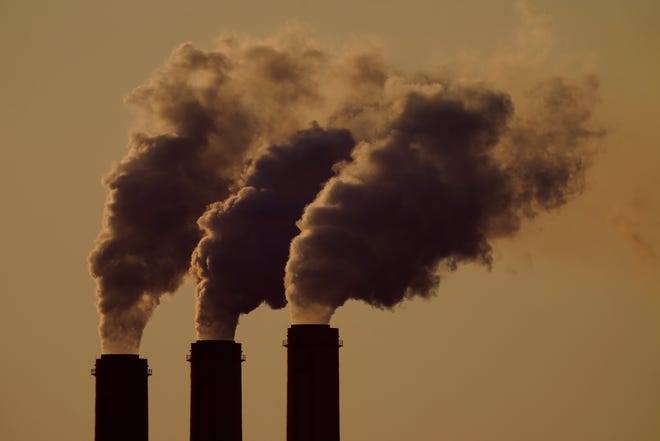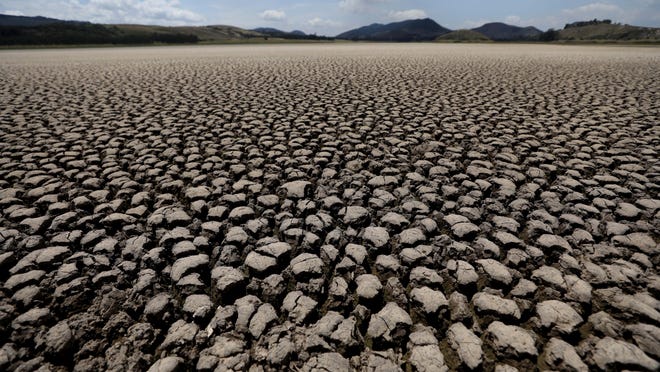WASHINGTON – The Supreme Court on Thursday ruled against an Environmental Protection Agency effort to regulate power plant emissions, dealing a blow to the Biden administration in one of the most significant climate cases decided by the high court in more than a decade.
Chief Justice John Roberts wrote the opinion for a 6-3 majority the latest in a series of major decisions on abortion, guns and religious freedom in which the court’s conservatives largely stuck together. The court’s three liberal justices dissented.
At the center of the climate case was a question about whether the EPA had authority to curb carbon emissions from power plants. Simmering just below the surface was a deeper debate over how much authority all federal agencies have to issue regulations absent explicit authorization from Congress – an issue with far-reaching implications.
“Capping carbon dioxide emissions at a level that will force a nationwide transition away from the use of coal to generate electricity may be a sensible ‘solution to the crisis of the day,'” Roberts wrote for the majority.
But, Roberts asserted, it wasn’t plausible that Congress intended to give the environmental agency the power to regulate those emissions without saying so in the law explicitly. A “decision of such magnitude and consequence rests with Congress itself,” he said, or an agency acting with clear consent of lawmakers.
In a dissent joined by the court’s other two liberals, Associate Justice Elena Kagan wrote that the court was stripping the EPA of a vital authority.
“The stakes here are high,” Kagan wrote. “Yet the court today prevents congressionally authorized agency action to curb powerplants’ carbon dioxide emissions. The court appoints itself – instead of Congress or the expert agency – the decision-maker on climate policy. I cannot think of many things more frightening.”
A first:Judge Ketanji Brown Jackson to make history as Supreme Court’s first Black woman justice
Though climate change itself was not widely discussed during oral arguments earlier this year, the case arrived at the high court as scientists, U.S. military officials and the United Nations have warned about dire and imminent consequences of that phenomena. A report in April found that without immediate emission reductions, limiting global warming to 1.5 degrees Celsius – a key cutoff for curbing sea-level rise – is “beyond reach.”

The appeal had its genesis in an effort by the Obama administration in 2015 to reduce power sector emissions. The Supreme Court temporarily blocked those regulations from taking effect and the Trump administration repealed the rules in 2017, easing the requirements on the plants.
New York, 21 other mainly Democratic states, and some of the nation’s largest cities sued over the Trump repeal. A three-judge panel of the U.S. Court of Appeals for the District of Columbia Circuit ruled last year that the way the EPA handled the rollback of the Obama-era rule amounted to a misreading of the 1970 law.
Nineteen GOP-led states, led by West Virginia, appealed that ruling.
Beyond emissions:How a major climate case could change the course of Biden’s presidency
The potential implications of the decision were far broader than the EPA and environmental issues. Several members of the Supreme Court’s 6-3 conservative majority have expressed skepticism about the authority of federal agencies to issue regulations in situations where a law passed by Congress is ambiguous, especially when they have major economic or social impacts. That’s a break from the past, when federal courts tended to defer to agencies.
Last year, the Supreme Court blocked a Centers for Disease Control and Prevention eviction moratorium imposed early in the COVID-19 pandemic. That regulation was based on a 1944 federal law that gives the Department of Health and Human Services the power to “make and enforce such regulations” that in the agency’s judgment “are necessary to prevent” the “spread of communicable diseases.” A majority of the Supreme Court said that Congress couldn’t have meant to give CDC the power to regulate the rental housing market.
The court’s decision appeared to be a full-throated endorsement of the “major questions doctrine,” or the idea that courts should give less deference to agency regulations without explicit approval from Congress if those rules would have an impact on questions of “vast economic and political significance.” That standard could have implications for other regulations, such as those dealing with the workplace and public health.
Roberts wrote that the test has been developed to address the “particular and recurring problem” of “agencies asserting highly consequential power beyond what Congress could reasonably be understood to have granted.” Critics of that approach, including Kagan, say that because terms such as “vast” and “significance” are not well defined it amounts to courts being able to strike down government rules arbitrarily.
Backlash:Ruling overturning Roe v. Wade sparks debate about Supreme Court’s legitimacy
The high court’s review of the power plant emissions regulation was complicated by the fact that no rule was formally in place – the appeals court had struck down the Trump administration’s repeal of the Obama-era rule but did not reinstate the earlier regulation. Because of that, the Biden administration argued that the court should have dismissed the appeal as moot.
The initial reductions sought in the Obama plan, meanwhile, were already achieved through the closure of coal plants – a shift driven by economic, not government, forces.
West Virginia and other states countered that the Biden administration is crafting a new power plant emissions rule and asserted that the appeals court decision brought “back to life a rule that hurts us and that takes off the books a rule that benefits us.”





